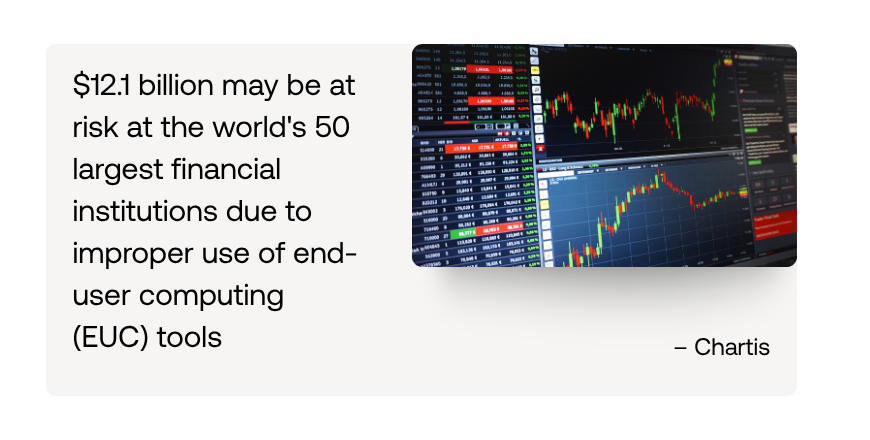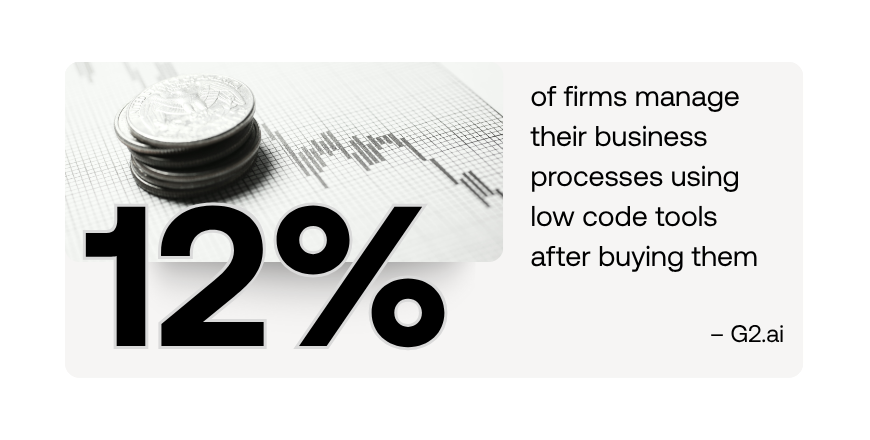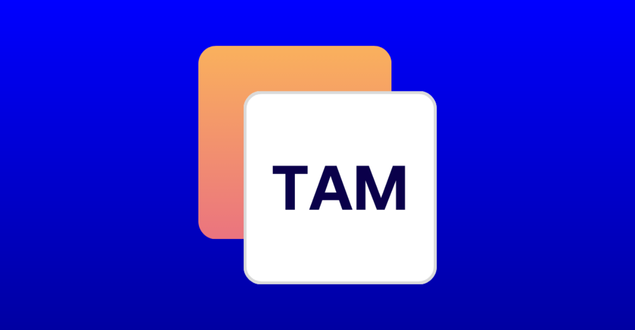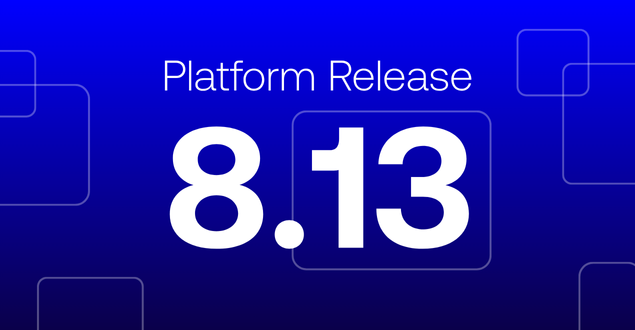
Table of Contents
- Introduction
- Empower your business-aligned technology teams
- What makes building an Excel EUC so easy?
Get in touch to learn how Genesis can help you modernize your workflows
Introduction
A key challenge in financial services is balancing innovation, regulation, and technology change. The pace of new rules and requirements continues to accelerate with over 75% of European compliance leaders reporting a 35% rise in compliance workloads in the past year (Dun & Bradstreet).
At the same time, financial institutions must maintain both resilience and agility. On one side are large, monolithic applications – robust, end-to-end systems that are expensive, slow to implement, and difficult to customize. On the other side are highly agile but uncontrolled End-User Computing (EUC) tools, which are fast and flexible but often insecure and error-prone.
A Chartis study estimates that up to $12.1 billion may be at risk at the world’s 50 largest financial institutions due to improper use of EUC tools.

Are EUCs putting your business at risk? Find out now
EUCs emerged to fill the gaps left by inflexible enterprise systems. They offered teams a quick way to solve problems and adapt processes without waiting for central IT. However, the lack of governance, security controls, and standardization has led to regulatory scrutiny and massive technical debt across the industry.
Early solutions — like general-purpose low-code platforms — promised to empower citizen developers with drag-and-drop simplicity. Yet adoption fell short. Only 12% of firms use these tools effectively for process management after purchase.
While low-code can be useful for simple applications, it struggles with the real-time, audited, and secure environments required in financial markets. Instead of reducing risk, these tools often introduced new forms of EUC sprawl, with fragmented processes and inconsistent oversight.

Empower business-aligned technology teams
EUCs become a default choice when centralized IT teams can’t deliver solutions fast enough. This isn’t always IT’s fault — many of the large applications used in financial institutions are simply too rigid to integrate smoothly with internal or third-party systems.
Building a new, compliant application from scratch can take years and consume enormous resources. As a result, innovation often stalls, and new ideas struggle to gain traction.
The Genesis Application Platform changes that dynamic. Genesis enables both centralized and business-aligned technology teams to rapidly build compliant, high-performance applications using:
- Reusable components
- A high-performance runtime
- AI-augmented development tools
This approach bridges the gap between agility and control, empowering developers to create scalable, resilient applications without the risks of EUCs.
Why Excel EUCs are so easy – and so risky
The popularity of Excel-based EUCs comes down to convenience. Building one requires no identity and access management (IAM), no database provisioning, and no formal change management or CI/CD oversight. The UI already exists, and the creator can focus directly on business logic, skipping infrastructure and governance steps entirely.
But that speed comes with significant risks. Turning a simple spreadsheet into an industrial-grade, auditable application requires building:
- Secure access and identity management
- A proper data model and backend infrastructure
- Testing and deployment processes
- UI and integration layers
These steps are essential — but they add enough overhead to discourage investment unless pressure comes from risk and compliance teams.
Fortunately, Genesis includes all these capabilities out of the box. Applications built on the Genesis Platform are:
- Fully integrated into CI/CD pipelines
- Managed through formal change control
- Designed to prevent or replace risky EUCs
This means firms can deliver custom-built, regulated, and high-performance solutions at speed — achieving both resilience and agility in one platform.
Building the future beyond EUCs
The financial industry no longer needs to choose between agility and control. By adopting a modular, multi-asset architecture, firms can scale quoting, execution, and portfolio management at speed, without overwhelming operational resources.
Genesis provides the foundation for this next era: combining speed with compliance, flexibility with structure, and innovation with security.











